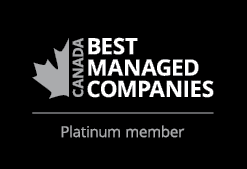Managing risk within your organization is a lot more than merely renewing your insurance program. Insurance is a crucial component of your organization’s risk management strategy, but it’s only one piece.
In order to manage your company’s risk, you first need to identify the existing risks that might jeopardize your company’s financial viability. This can be a difficult task, given you’re essentially trying to predict the future, and you’ll need to leverage both internal and external expertise and experience. Internally, you can look to key employees and management to provide insights. Externally, you’ll want to look at trusted partners like your accountant, insurance broker, lawyer, professional consultants and other specialists.
Before planning a strategy for managing risk, it’s important to determine your organization’s ‘risk appetite,’ or how much risk you are willing, and can afford, to accept. You then need to identify what measures are in place or still needed, such as quality assurance and quality control, to manage that risk accordingly. Once you’ve identified and prioritized the risks your organization faces, it’s time to determine how you want to manage it.
Contact a Cowan construction insurance expert today.
Simply put there are three ways you can deal with risk: Avoidance, Acceptance, and Transfer:
- Avoidance is a conscious decision not to undertake a particular project or activity. In these cases, it’s determined that the potential risk far exceeds the potential benefits.
- Acceptance is a conscious decision to engage in a certain project or activity as the payback is greater than the cost of transferring. Call this your company’s ‘threshold for pain.’ What risk can be carried without a significant impact to your balance sheet?
- Transfer is transferring risk to a third-party by purchasing insurance or having risk transferred by contract to someone other than an insurance company.
While you can transfer risk contractually, you also need to be conscious about contractual risks that could be transferred to you, such as the often overlooked obligation to pay deductibles.
For example, in most contracts, owners typically state that where the contractor is responsible for a loss, the contractor (and potentially any sub-contractors) will pay the deductible. The premise is that contractor, in having to pay some portion of any loss they may be responsible for, are more likely to act to reduce risk on the job site.
While this makes sense, what many don’t realize is if the owner purchased a project-specific Wrap-up Liability policy, the contractor could be responsible for the loss and be required to pay the Wrap-Up deductible. At this point, you’re probably asking, “But if all policies have deductibles, what difference does it make?”
The concern is that project specific wrap-up liability policies are purchased on larger projects to potentially cover all parties on the job site, and as such, limits and deductibles are higher. As the contractor, you could be responsible for a deductible in the amount of $25,000, $50,000, $100,000 or more. By identifying this risk at the outset of a job, you can either price accordingly or transfer the risk to your insurance carrier who can pay the difference between your chosen deductible and the wrap-up deductible.
The construction industry has unique exposures so when it comes to risk management, it’s important to have expertise and experiences of trusted partners who can help identify, prioritize and manage risk. Implementing a comprehensive quality assurance and quality control program will minimize risk and keep your company’s growth on track. To compliment that program, solutions should also be tailored specifically to your organization, whether you choose to avoid, accept or transfer risk.

-min.jpg?width=400&name=MFA_Blog%20(1)-min.jpg)
-min.jpg?width=400&name=AJ%20Feltis%20(1)-min.jpg)
-min.jpg?width=400&name=Healthy_Workplace_Blog%20(1)-min.jpg)

